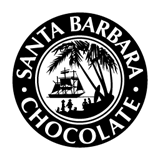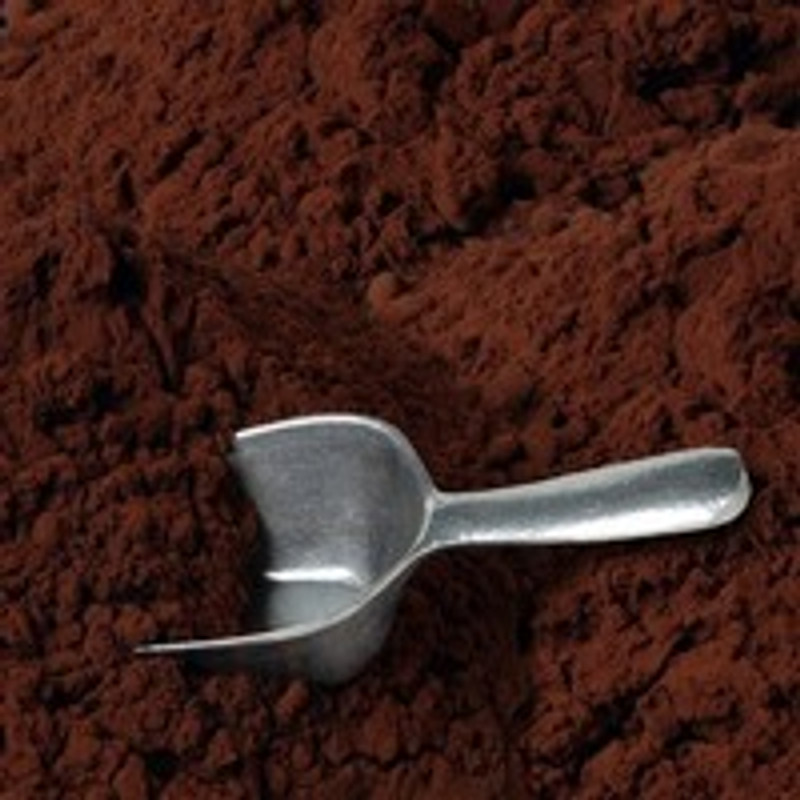Cocoa Powder Alkalization Method
Dutch-processed cocoa, or alkalized cocoa powder, is made by treating chocolate with an alkalizing chemical. This method balances the natural acidity of cocoa while altering its color, flavor, and solubility. Depending on the outcome we want, Santa Barbara Chocolate uses either potassium carbonate or sodium hydroxide to treat our Black and Red alkalized cocoa powders.
Understanding the alkalization method helps clarify how these cocoa powders differ in functionality and how they may be best used in various recipes, especially in large-scale food production or specialty chocolate applications.
What Is Cocoa Alkalization?
Cocoa alkalization is a processing step in which natural cocoa powder is treated with an alkaline solution. The goal is to increase the pH of the cocoa, reducing its acidity. This change affects flavor, color, and solubility. It is widely used in food manufacturing, where consistency and color control are critical.
Most of the time, alkalized cocoa tastes smoother and less bitter than natural cocoa powder. Instant mixes and ready-to-drink beverages benefit from its improved mixing with liquids.
Alkalizing Agents Used
At Santa Barbara Chocolate, our Black Cocoa Powder and Red Cocoa Powder undergo treatment with one or both of the following agents:
- Potassium Carbonate (K₂CO₃)
- Sodium Hydroxide (NaOH)
Potassium Carbonate
This is the most widely used alkalizing agent in cocoa processing. It raises the pH of cocoa to a mild level and gives it a reddish-brown to dark brown color. The flavor becomes more subtle and chocolate-forward. Potassium carbonate is widely preferred for its food safety record and ability to preserve cocoa's natural aroma while reducing astringency.
Sodium Hydroxide
An even darker cocoa powder could be produced with sodium hydroxide, which is less commonly used. Its alkalizing action is more forceful, producing black cocoa with an extremely high pH. These cocoa powders work well in baked products like sandwich cookies that need to have a dark color and a subtle flavor.
Because of its strength, sodium hydroxide requires careful handling and precise formulation during the alkalization process to maintain food safety standards.
Color Impact and Product Types
The degree of alkalization affects the final appearance of the cocoa powder:
- Light to medium alkalization with potassium carbonate yields a red-toned cocoa powder, often labeled as "Red Cocoa Powder."
- Often referred to as "Black Cocoa Powder," very dark or almost black powder results from strong alkalization using sodium hydroxide or high concentrations of potassium carbonate.
These cocoa powders are perfect for a variety of recipes:
- Red Cocoa Powder: Typically used in cakes, brownies, and compound coatings where a strong chocolate hue is desired without a dominant flavor.
- Black cocoa powder: is frequently used to create visual contrast in industrial chocolate ice creams, sandwich cookies, and wafer applications.
Flavor Characteristics
Alkalized cocoa has a mellow, less acidic taste compared to natural cocoa. The extent of alkalization directly affects the final flavor:
- Mild Alkalization (pH 6.8–7.5): Chocolatey, round flavor with some fruity undertones retained.
- Moderate Alkalization (pH 7.6–8.0): The flavor is smoother and darker, making it good for baking with darker chocolate.
- Strong Alkalization (pH 8.1 and above): Very mellow, nearly neutral taste, ideal for recipes where the cocoa’s bitterness needs to be suppressed.
Functional Benefits in Food Production
Alkalized cocoa powders are commonly used in:
- Ready-to-drink chocolate beverages
- Baking mixes
- Ice creams
- Cereal coatings
- Industrial fillings and spreads
They are very useful in food manufacturing because they keep their flavor and color and mix better in liquids.
Alkalization and Nutrient Content
Alkalising cocoa may reduce flavanols and other naturally occurring antioxidants. However, in food processing situations where stability, color, and flavor control are critical, the functional performance of alkalized cocoa typically outweighs this concern.
Natural cocoa powder or high flavanol cocoa can be better choices for health-conscious products when a high polyphenol content is desired.
Considerations for Wholesale Buyers
When locating alkalized cocoa for retail or wholesale use, consider the following factors:
- Color specification: Choose red or black based on the product’s visual target.
- Flavor profile: Consider how strong or mild you want the cocoa notes.
- Solubility: Highly alkalized powders dissolve more easily, which may benefit beverage or mix formulations.
- Labeling compliance: Confirm the alkalizing agent used for transparency in ingredient statements.
Santa Barbara Chocolate provides a range of alkalized cocoa options tailored for bulk supply and commercial use. Our direct-from-factory technique allows us to maintain consistent sourcing and quality control over multiple batches.
Product Links
- Black Chocolate Cocoa Powder – Santa Barbara Chocolate
- Organic Red Cocoa Powder – Santa Barbara Chocolate
We offer a direct connection to ethically sourced cocoa powders that support formulation consistency without compromising on ingredient integrity.

